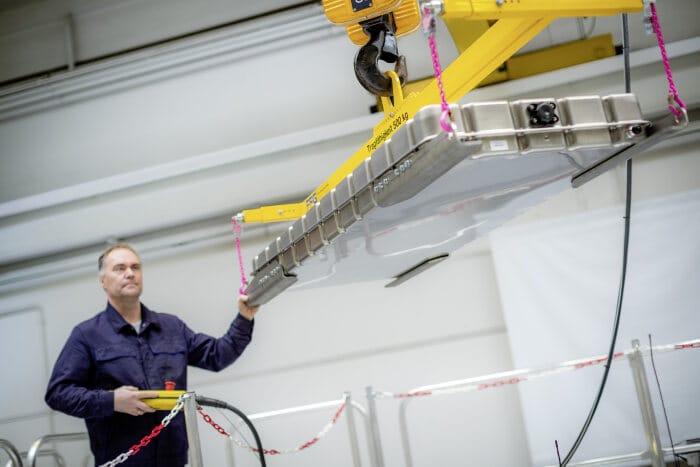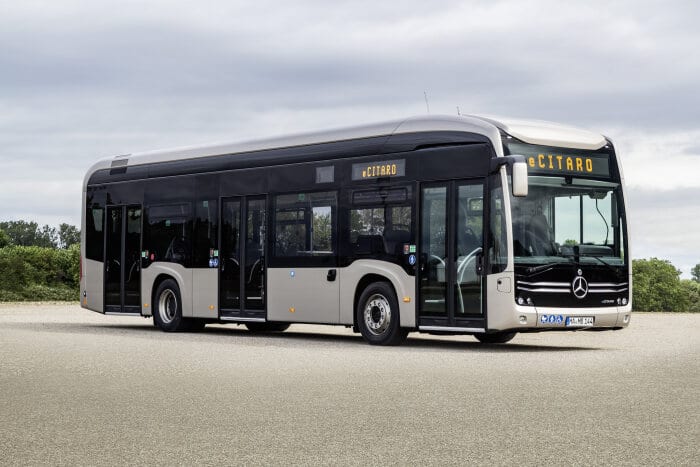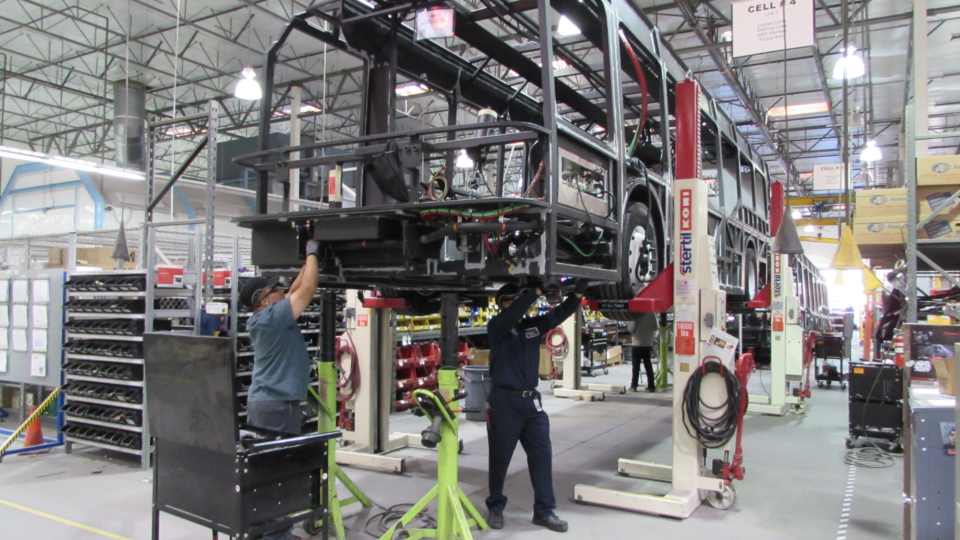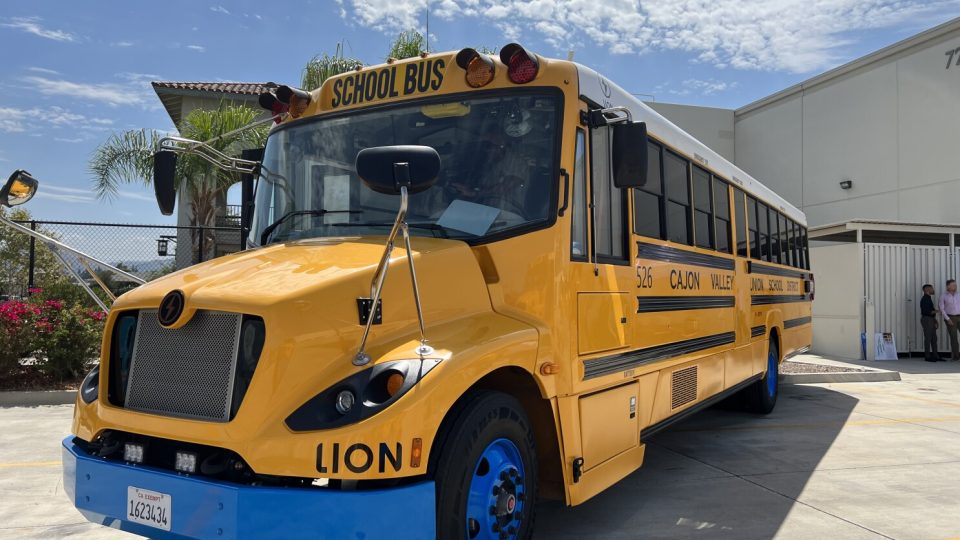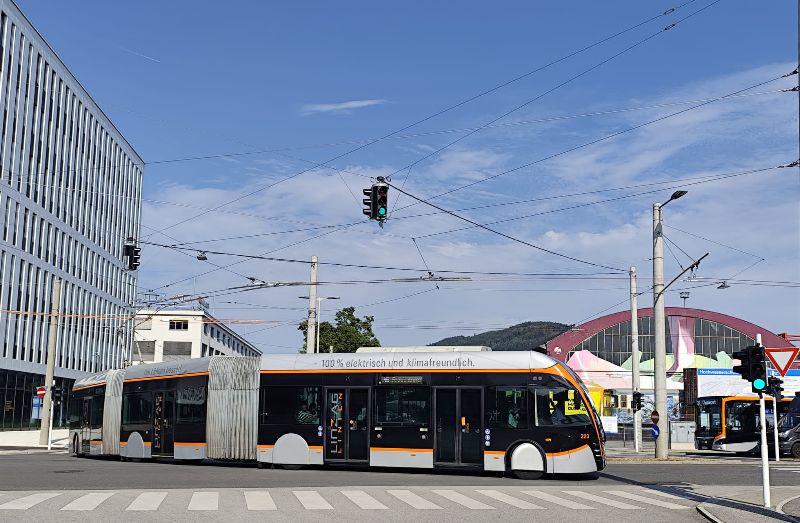eCitaro battery packs to live a 2nd life as energy storage for trams
Daimler Buses has in fact partnered with the GUW+ model project: in a new rectifier substation operated by ÜSTRA Hannoversche Verkehrsbetriebe AG, a stationary energy storage unit has been implemented which uses battery systems previously installed in fully electric eCitaro urban buses. The development and implementation of the 2nd-life use batteries is being handled by Mercedes-Benz Energy GmbH in Kamenz (Saxony).

Batteries don’t end their life on the bus, but may be useful again within the boundaries of public transport sector. In Germany, second life drive batteries from a Mercedes eCitaro have been used at rectifier substation as part of Hanover’s GUW+ project
Daimler Buses has in fact partnered with the GUW+ model project: in a new rectifier substation operated by ÜSTRA Hannoversche Verkehrsbetriebe AG, a stationary energy storage unit has been implemented which uses battery systems previously installed in fully electric eCitaro urban buses. The development and implementation of the 2nd-life use batteries is being handled by Mercedes-Benz Energy GmbH in Kamenz (Saxony).
Similar projects have been put in place so far by Volvo Buses, Solaris Bus & Coach and Irizar.
The eCitaro carbon footprint is much better than that of a conventionally powered urban bus when you look at the data for the long service life of the vehicle. And re-purposing its batteries improves the environmental balance sheet even further.
Gustav Tuschen, Head of Development at Daimler Buses
E-bus batteries, a lifespan of 5-6 years
The service life of the NMC batteries used in fully electric Mercedes-Benz eCitaro buses is between five or six years, by which time the capacity diminishes to approximately 80 percent. After that, the required range for urban buses is no longer guaranteed.
However, the life cycle of a battery needn’t end upon removal from the vehicle. In stationary operations, such batteries are generally still good to use – capacity losses are less of an issue in such applications. After their intended use in vehicles, it is possible to use the batteries in a stationary application for several years. The GUW+ project thus seeks to give batteries from electric urban buses a second life.
New rectifier substation in Hanover thanks to second life batteries
From the 4th quarter of 2021, the new rectifier substation in Hanover will help supply the trams and electric buses operated by ÜSTRA. The energy storage units will serve as a buffer to enable the efficient use of any recovered energy in tram operations and, in doing so, will enable compensation of load peaks, as well as continued operation in the event of a power cut and the provision of electrical energy for the public charging infrastructure.
This pilot project’s energy storage unit offers a capacity of approximately 500 kWh and is made up of around 20 battery systems which were previously used to cover thousands of miles in the eCitaro as part of operational testing.
GUW+ project: giving a second life to e-bus batteries
The extension of a classic rectifier substation to include intelligent functions has been developed and demonstrated within the framework of the GUW+ project sponsored by Germany’s Federal Ministry for Traffic and Infrastructure.
ALSTOM Transport Deutschland GmbH from Salzgitter is heading up the consortium, which is also made up of Elpro GmbH from Berlin, Motion Control and Power Electronics GmbH from Dresden, Fraunhofer IVI from Dresden and the Technical University in Dresden. Daimler Buses is supporting the project as an associated partner. ÜSTRA AG is taking part in GUW+ as a demonstration partner. Having started in 2019, the project is expected to run for three years.
Mercedes-Benz Energy GmbH is a subsidiary of Mercedes-Benz AG and is responsible for the development of innovative energy storage solutions. The main focus of the business is on 2nd-life applications and energy storage using decommissioned replacement parts. Together with their partners, the company has already used automotive battery systems to add three large energy storage units to the German electrical grid, delivering a total energy capacity of around 50 MWh. The first 2nd-life batteries were brought into operation on the grid in October 2016 in Lünen, Westphalia.
eCitaro second life batteries: an holistic approach
As part of its understanding of sustainability, Daimler Buses has looked holistically at the life cycle of buses and their battery systems. Gustav Tuschen, Head of Development at Daimler Buses: “Looking after the environment and being sparing with resources are the main arguments in favour of our electrically powered eCitaro urban bus. We have checked thoroughly and its carbon footprint is much better than that of a conventionally powered urban bus when you look at the data for the long service life of the vehicle. And re-purposing its batteries improves the environmental balance sheet even further.”
Holger Elix, Head of Infrastructure at ÜSTRA explains a further aspect: “The cost of buying electric buses is a big challenge. So re-using the batteries as a stationary unit on the company premises can additionally spread the costs and may well speed up the electrification of local public transport.”

